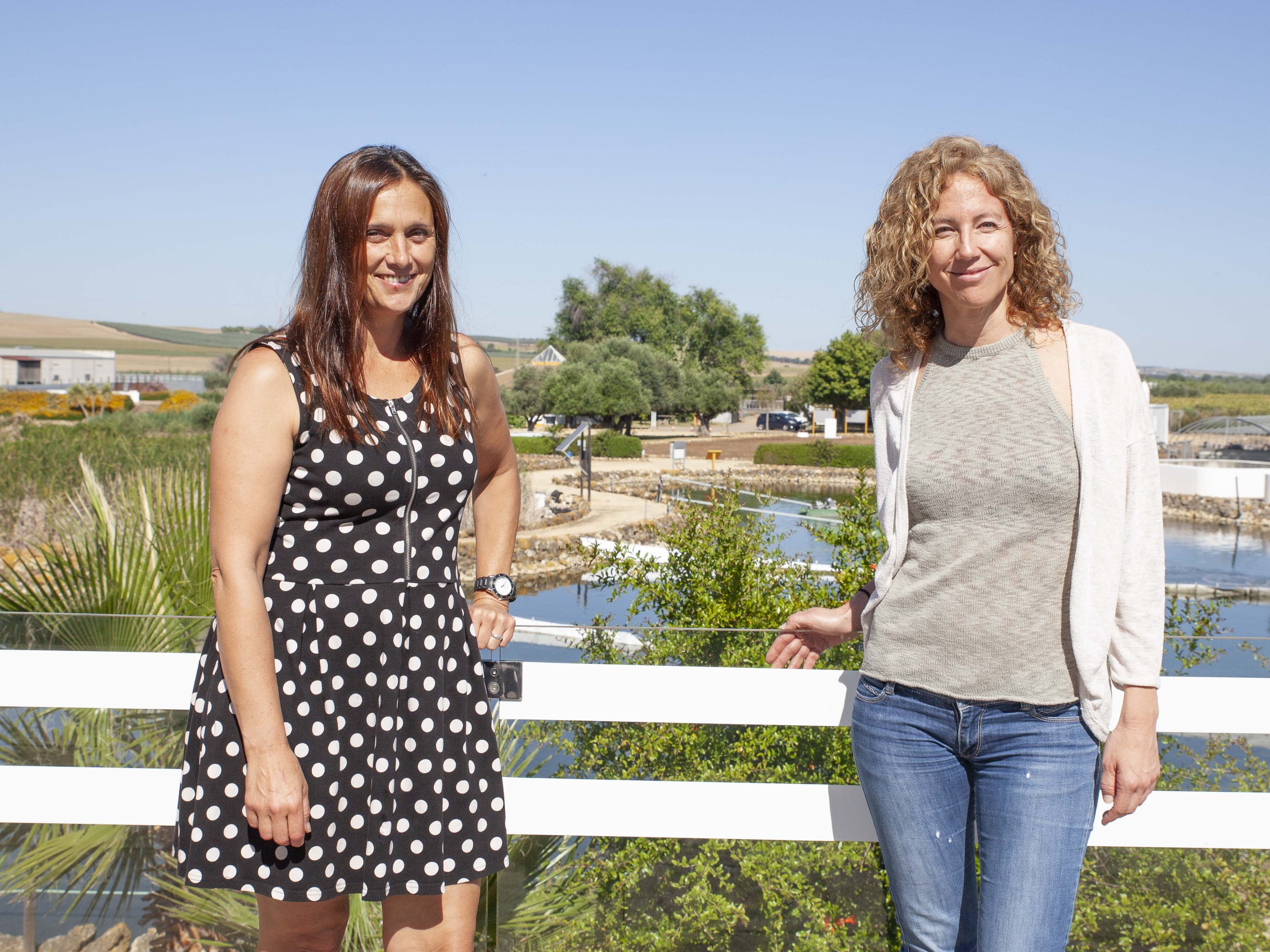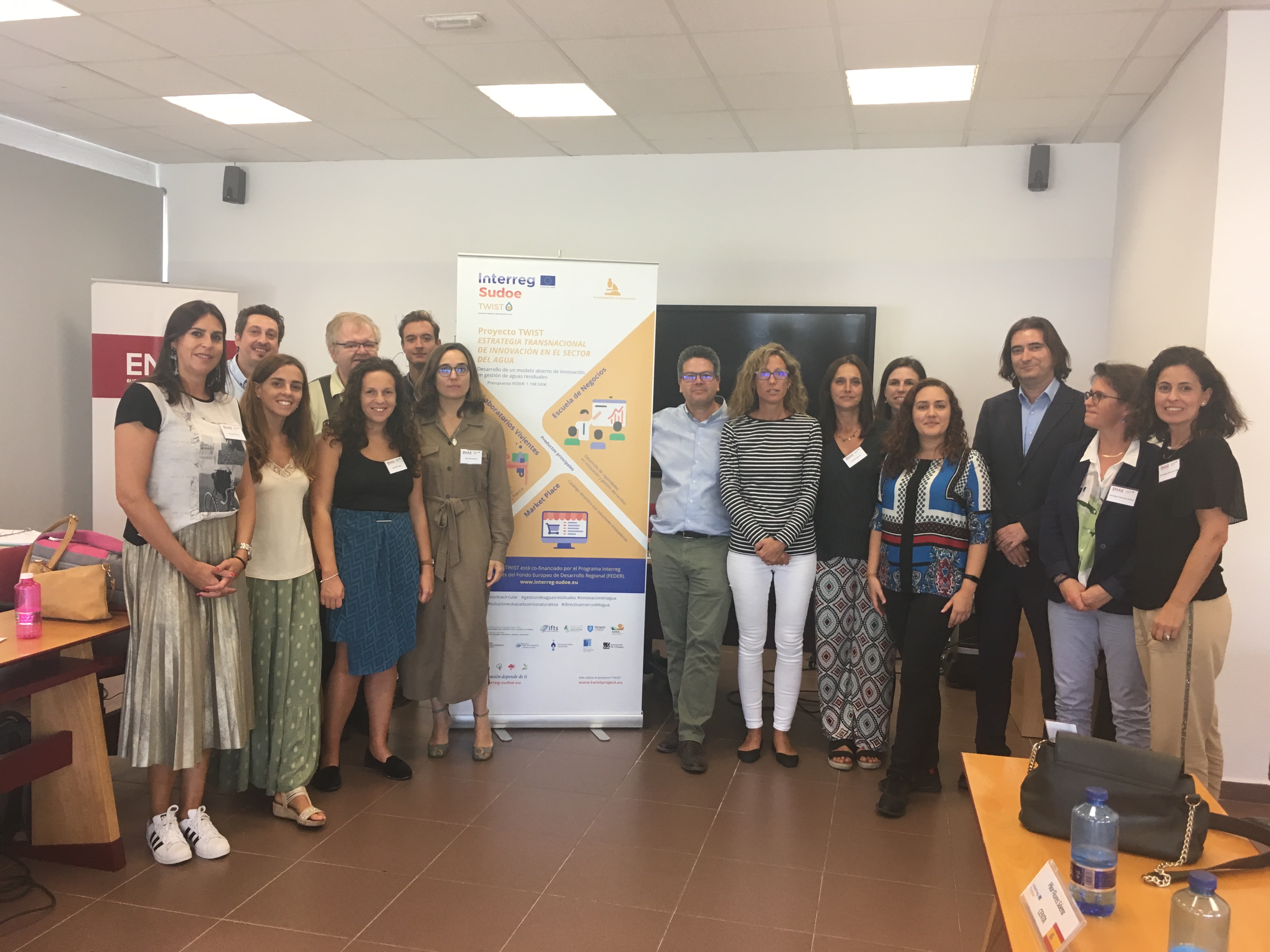Communication
Sudoe News
30 years of Interreg: TWIST a project for water innovation
Categoría Management of projects approved
This year Interreg celebrates its thirtieth birthday, focusing on three thematic of interest for the European cohesion: youth, greener Europe and we all have neighbors. In this context, each month, we present one of our emblematic projects related to one of these thematic.
This month we introduce TWIST, a project to foster a model of circular economy based on wastewater management.

Interview of Pilar Flores and Arantxa Aguirre (CENTA)
- What is the project about?
The Transnational Water Innovation Strategy (TWIST) project aims to develop an open model of innovation in wastewater management by giving compliance to the Water Framework Directive and promoting a circular economy model. The project helps to find research areas of interest in the water sector in the different regions and to promote actions with greater effect thanks to the combined efforts of the partners. The regions where TWIST is being implemented are: Lisbon and Alentejo in Portugal, Andalusia and Murcia in Spain; Nouvelle-Aquitanie and Occitanie in France. The business/industry sphere is traditionally considered the main promoter of innovation, academia a knowledge producer, and public administrations enablers for knowledge and innovation to be transferred to the territorial level in terms of economic growth. The combined work of these three spheres promotes change through a top-down approach. The fourth sphere includes civil society which not only uses and applies knowledge, but also demands for innovation within the goods and services provided.
- How is the project developed?
The project develops five products:
- A strategy to develop relationships between all the actors involved in the water sector, to promote research and innovation in the water sector and to strengthen cooperation between the different regions of the project.
- 3 water-oriented Living Laboratories, one in each country.
- 3 pilot cases on Innovation Public Procurement in the water sector, one per country.
- A Transnational Business School for the training and empowerment in water innovation of SMEs, entrepreneurs and public sector workers, to attract and retain qualified human capital.
- A Market Place that is a virtual meeting point for all supplying and demanding agents of innovative solutions (research groups, SMEs, entrepreneurs).
- What is a Living Lab and how do you apply it in the water sector?
A Living Lab is an entity where all the stakeholders work together to improve innovation, develop innovative technologies and transfer them to the society. It is key to identify the needs of the final users and find innovative technologies and solutions that respond to these needs. It is a space for designing, testing and validating technologies or products but it is also a participatory methodology based on active collaboration and cooperation between the public and private sectors and citizens. The main elements of a Living Lab are the community of users (composed by the stakeholders of the territory), the infrastructure (the physical space for research), ICT and a services catalogue. Fulfilling the objectives of the project, we are implementing three Living Labs in the three countries involved:
- Spain: Open Water Living Lab (OWL2), promoted by CENTA Foundation and located in its experimental facilities in Carrión de los Céspedes, Sevilla. OWL2 is focused on wastewater treatment and water reuse.
- Portugal: Urban Lisbon Living Lab (uL3), promoted by the Instituto Superior Técnico (IST), Instituto Superior de Agronomia (ISA) and Águas do Tejo Atlântico, S.A. (AdTA), focused on wastewater treatment for reuse and resource recovery (water, nutrients and energy).
- France: LaViso Living Lab, that is promoted by the International Office of Water (OIEau), the Institute for Techniques of Separation and Filtration (IFTS) and the University of Limoges. LaViso is focused on wastewater treatment and the associated water infrastructures management.
Our TWIST Living Labs have a broad catalogue of services to the users, such as research, testing and validation of technologies, technology transfer, training, market analysis and marketing, dissemination of knowledge, program of visits, technical assistance, etc.
- What are the expected results and what have you already achieved?
We have already finished the TWIST Strategy, we have made an identification of the needs of the water sector in the 6 regions and we are developing the pilot cases for innovative public procurement. We are holding participatory workshops to define the objectives, management procedures and the creation of the users’ community of each Living Lab, and it is expected that the three Living Labs will be operational at the end of the project. In any case, the research activities are working, since the partners of the TWIST Living Labs currently have projects in common. We are also defining the contents of the courses of the Transnational Business School (and developing training materials), and the TWIST Market Place. Both are expected to come into operation at the end of the project. The COVID 19 pandemic is currently delaying the development of the project, since many of the activities involve the participation and holding of workshops, meetings and events, which is forcing us to change methodologies and adapt to the new situation.
- How is TWIST collaborating with citizens?
TWIST creates physical and virtual areas to share regional experiences and generate mutual learning between different actors, including society. To do this, it analyses a group of the involved stakeholders, ensuring their integration in the experimentation and capacity-building processes, and reinforcing lines of collaboration. Nevertheless, the Living Labs become an instrument to promote active participation, being the major challenge to involve civil society. Although the citizens benefit from the environmental and health improvements that innovation in this area entails, it is difficult for them to be involved in the design and validation of technologies. However, we believe that there are ways to involve civil associations (consumers, irrigators, environmental, etc.) in the community of users of the Living Lab and it is to which we are directing many efforts. We can, for example, involve citizens in solving problems related to our behavior regarding water and wastewater management at home. At the CENTA Foundation experimental plant, promoter of the OWL2 in Spain, we have had a visit program for years, both for university or secondary school students, as well as technical personnel from public administrations, companies, and any citizen interested in learning about our Living Lab. And the three Living Labs have also training and educational programmes (specialized courses, masters, interchange of students, etc.).
For more information, please visit TWIST’s website.

© Picture: courtesy of TWIST's project



